Spider bites are a common occurrence, and most of the time, they are harmless, resulting in nothing more than minor discomfort. However, some spider bites, particularly in regions like the United States, can pose significant health risks. Knowing When To Go To The Doctor For A Spider Bite is crucial to ensure timely treatment and prevent potential complications.
This article will guide you on when to worry about a spider bite and when it’s essential to seek medical attention. While many spider species are not dangerous to humans, bites from certain spiders like the black widow and brown recluse can lead to severe reactions requiring professional medical care.
Recognizing Dangerous Spider Bites and When to See a Doctor
It’s important to understand that most spiders are not aggressive and bite only as a defense mechanism. The severity of a spider bite reaction varies depending on the spider species, the amount of venom injected, and individual sensitivity. Here’s when you should consider seeking medical help for a spider bite:
Immediate and Severe Pain
While any spider bite can cause some initial pain, bites from venomous spiders like black widows are known for causing immediate and intense pain. This pain can radiate from the bite site and may be accompanied by:
- Burning or stinging sensation
- Muscle cramps or spasms, especially in the abdomen, chest, back, or shoulders
- Severe pain at the bite site that worsens over time
If you experience intense, immediate pain following a spider bite, it’s advisable to seek medical attention promptly.
Systemic Symptoms Beyond the Bite Site
A spider bite is not just a localized skin issue. Venom from certain spiders can affect your entire body. Watch out for systemic symptoms that indicate the venom is spreading and affecting your bodily functions. These symptoms include:
- Nausea and Vomiting: Especially if persistent, these can be signs of a more serious envenomation.
- Difficulty Breathing: Shortness of breath or trouble breathing can be a sign of a severe reaction, particularly to black widow venom.
- Hypertension (High Blood Pressure): Black widow venom can affect the nervous system and lead to elevated blood pressure.
- Fever or Chills: Flu-like symptoms after a spider bite could indicate a systemic reaction or secondary infection.
- Numbness or Tingling: This can spread from the bite site and indicate neurological effects of the venom.
- Sweating: Increased sweating, especially localized or excessive, can be a symptom.
- Headache: Severe headache after a bite may warrant medical evaluation.
If you develop any of these systemic symptoms after a spider bite, it’s important to seek medical attention to rule out serious complications.
Signs of a Black Widow Spider Bite
Black widow spiders are among the most venomous spiders in North America. They are easily identifiable by their shiny black bodies and a distinctive reddish hourglass marking on their underside. A black widow bite can be serious, and you should seek immediate medical attention if you suspect you’ve been bitten.
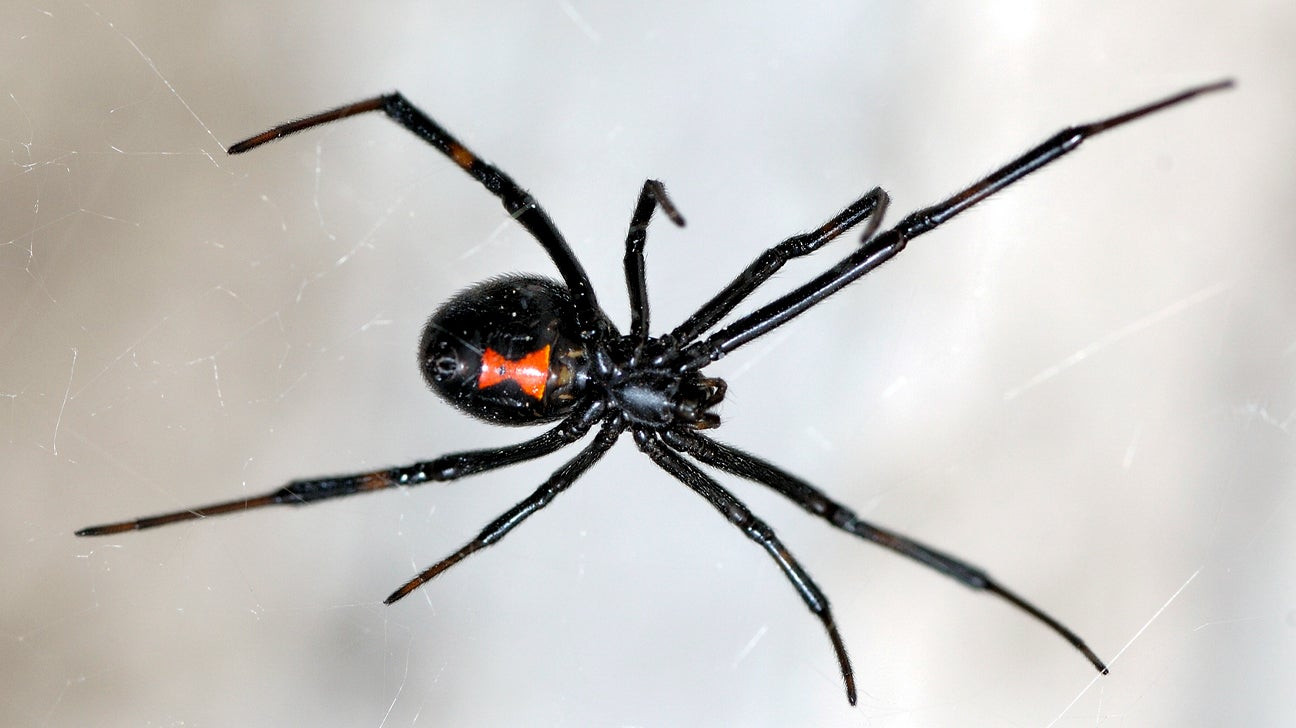 Black widow spider with a red hourglass marking, indicating a venomous species.
Black widow spider with a red hourglass marking, indicating a venomous species.
Key indicators of a black widow bite and when to go to the doctor:
- Intense Pain: Immediate, sharp pain at the bite site.
- Two Puncture Marks: You might notice two small puncture wounds.
- Muscle Cramping: Severe muscle cramps starting within an hour, often in the abdomen, back, chest, or thighs.
- Other Symptoms: Nausea, vomiting, difficulty breathing, hypertension, numbness, and fever as listed above.
Black widow bites require medical evaluation and treatment, which may include antivenom in severe cases.
Signs of a Brown Recluse Spider Bite
Brown recluse spiders are another type of venomous spider found in the United States. They are brown and often have a violin-shaped marking on their back. Brown recluse bites are less immediately painful than black widow bites, but they can cause significant tissue damage.
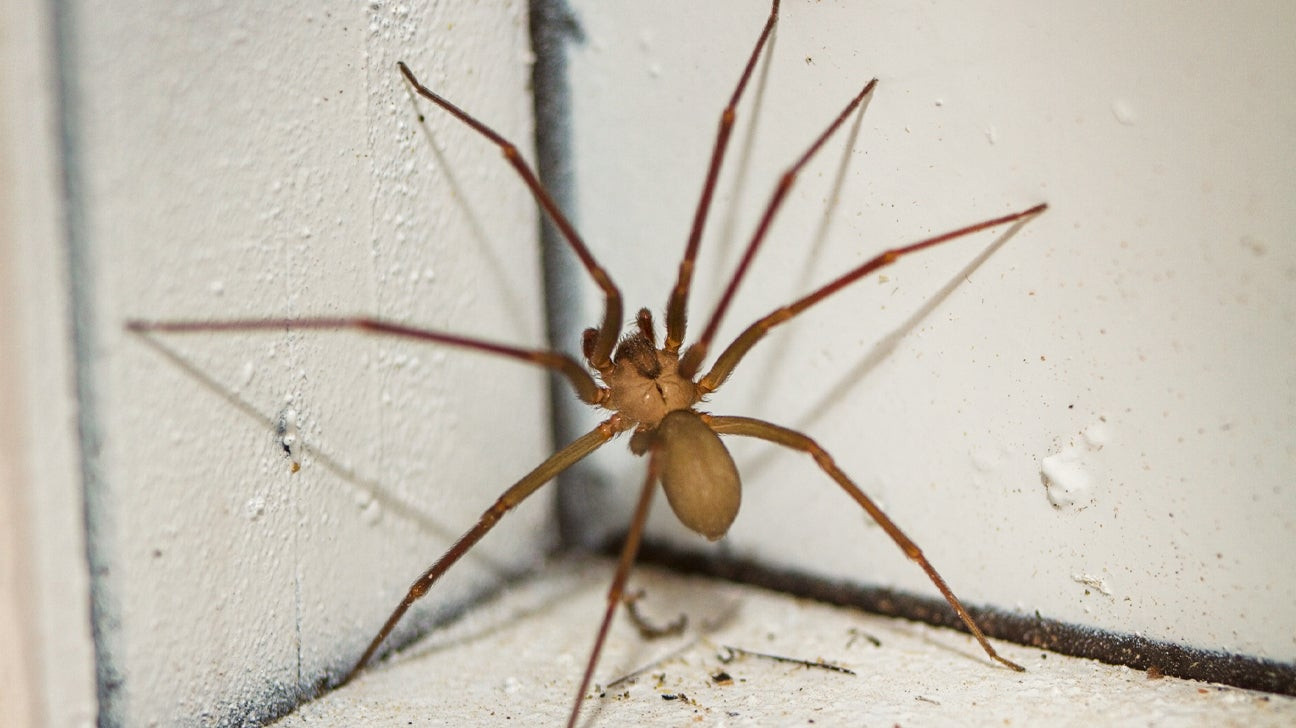 Brown recluse spider with a violin-shaped marking on its cephalothorax, a characteristic identifier.
Brown recluse spider with a violin-shaped marking on its cephalothorax, a characteristic identifier.
Key indicators of a brown recluse bite and when to consult a doctor:
- Initially Mild Pain: The bite may be painless or cause only mild stinging initially.
- Increasing Pain: Pain and redness develop and worsen over the next few hours.
- Blister Formation: A blister usually forms at the bite site within hours.
- Skin Necrosis: In severe cases, the venom can destroy skin tissue, leading to a dark, bluish or black lesion (necrosis) that can take weeks or months to heal and may leave a scar.
- Flu-like Symptoms: Fever, chills, body aches, and nausea can occur.
While not always necessary, medical attention is recommended for suspected brown recluse bites, especially if necrosis develops or systemic symptoms appear, to manage wound care and prevent complications.
Allergic Reactions
Even bites from non-venomous spiders can cause allergic reactions in sensitive individuals. An allergic reaction can be serious and requires immediate medical attention.
Signs of an allergic reaction to a spider bite include:
- Hives: Raised, itchy welts on the skin.
- Swelling Beyond the Bite Site: Spreading swelling, especially of the face, lips, tongue, or throat.
- Difficulty Breathing: Wheezing, shortness of breath, or tightness in the chest.
- Dizziness or Lightheadedness: Feeling faint or losing consciousness.
- Rapid Heartbeat: An unusually fast pulse.
If you experience any of these symptoms after a spider bite, seek emergency medical help immediately.
Bites from Unidentified Spiders
If you are bitten by a spider and you are unable to identify it, it’s always best to err on the side of caution. Monitor the bite site closely for any signs of worsening symptoms or infection.
Seek medical advice if you notice:
- Increasing Pain, Redness, or Swelling: Signs of a developing problem at the bite site.
- Pus or Drainage from the Bite: Indicating a possible infection.
- Red Streaks Spreading from the Bite: A sign of spreading infection.
- Any Systemic Symptoms: Fever, nausea, vomiting, etc., as mentioned earlier.
Less Dangerous Spider Bites
Many spider bites are from species that are not considered dangerous to humans. These include:
- Hobo Spiders: While once thought to cause necrotic lesions, this is now disputed. Bites are usually not medically significant.
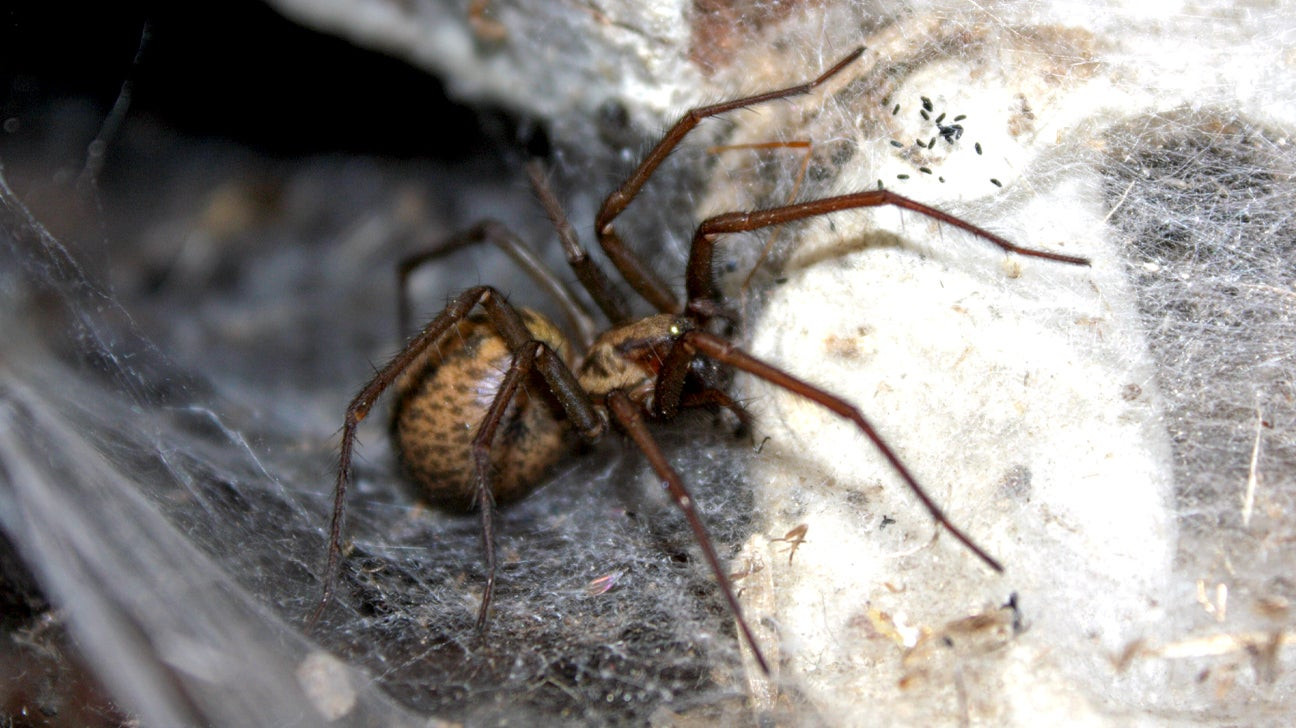 Hobo spider with V-shaped markings on its abdomen, a common house spider.
Hobo spider with V-shaped markings on its abdomen, a common house spider.
- Jumping Spiders: Small, hairy spiders known for jumping. Bites are generally harmless unless allergic.
 Jumping spider with prominent eyes and hairy body, known for their jumping ability.
Jumping spider with prominent eyes and hairy body, known for their jumping ability.
- Wolf Spiders: Large, hairy, and fast-moving. Bites can be painful but are not venomous to humans, causing only minor local reactions.
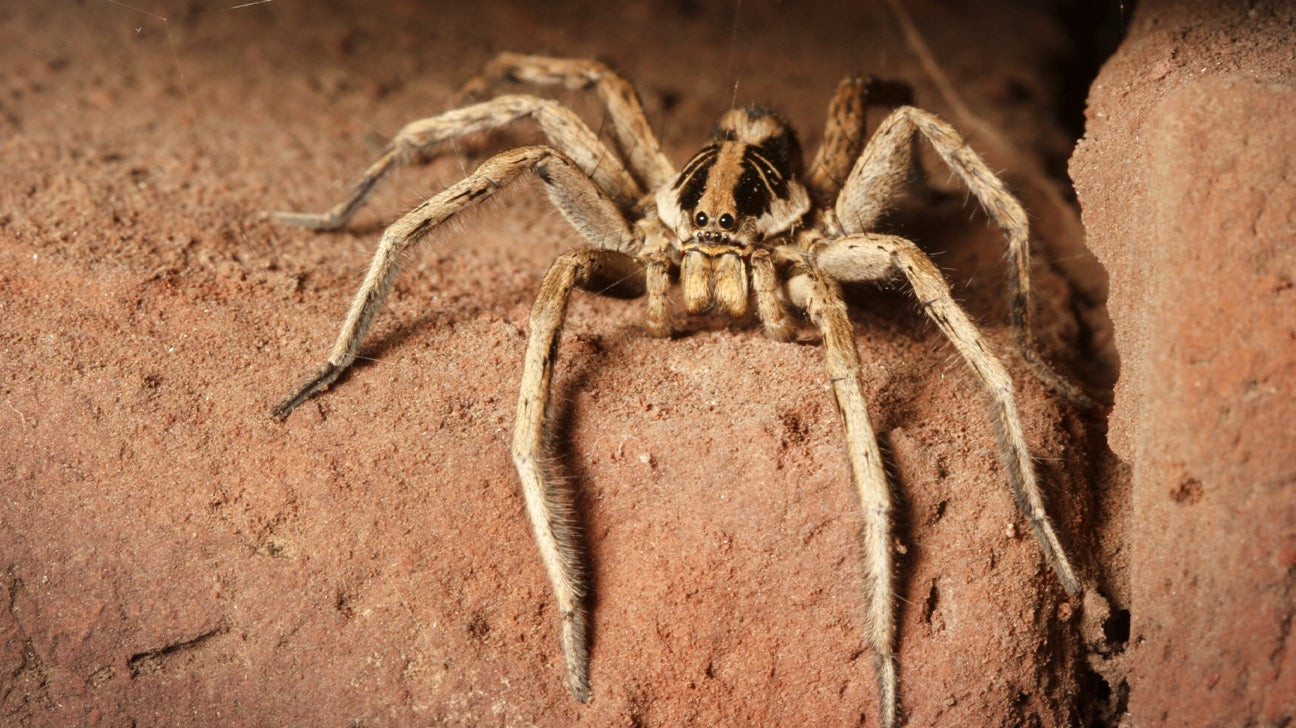 Wolf spider displaying camouflage and strong legs, known for their hunting behavior.
Wolf spider displaying camouflage and strong legs, known for their hunting behavior.
- Tarantulas: Large, hairy spiders, often kept as pets. Bites are typically less severe than a bee sting, unless allergic.
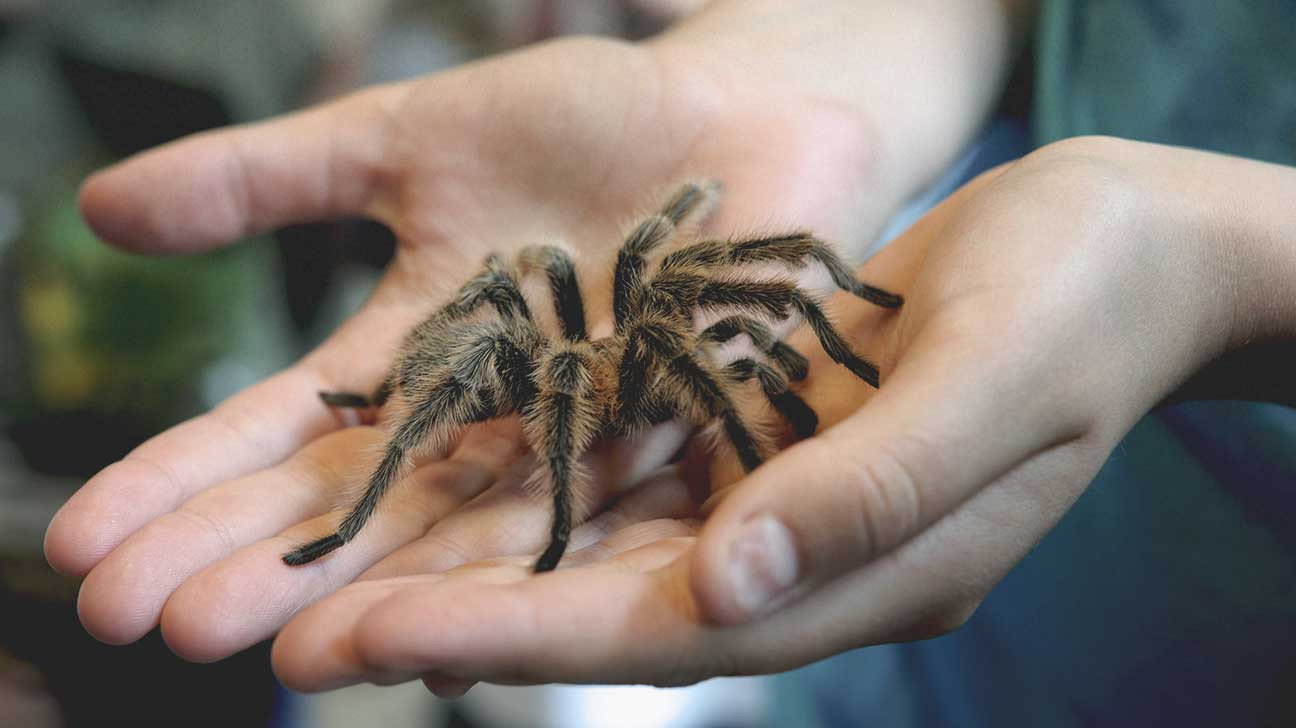 Tarantula, a large hairy spider, often black and intimidating in appearance but generally not dangerous.
Tarantula, a large hairy spider, often black and intimidating in appearance but generally not dangerous.
- Camel Spiders (Sun Spiders): Not true spiders, but arachnids. They are non-venomous, though their bite can be painful due to their strong jaws.
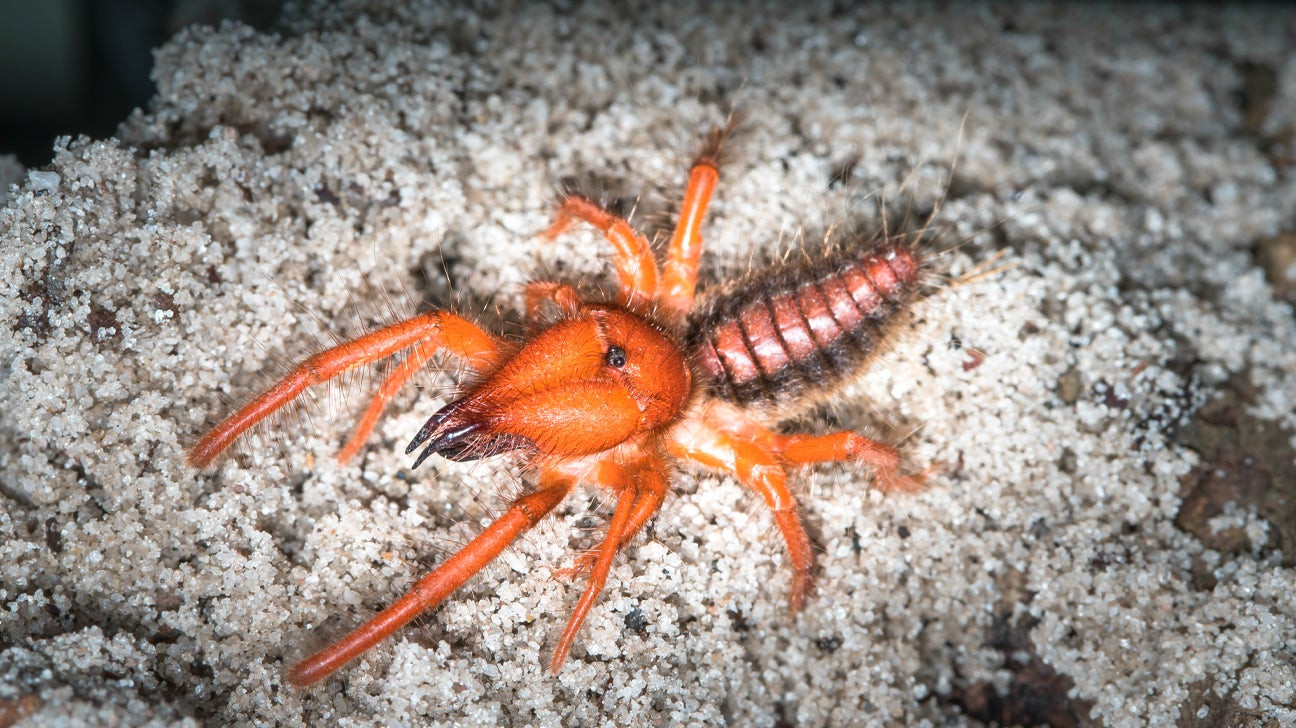 Camel spider with light coloration for desert environments, known for speed but not venomous.
Camel spider with light coloration for desert environments, known for speed but not venomous.
For bites from these spiders, medical attention is usually not necessary unless there are signs of infection or an allergic reaction.
First Aid for Spider Bites
While knowing when to go to the doctor is crucial, basic first aid can be helpful immediately after a spider bite:
- Clean the Bite Area: Wash the bite site gently with soap and water.
- Apply a Cold Compress: Use a cold pack or cloth dampened with cold water to reduce swelling and pain.
- Elevate the Affected Limb: If possible, elevate the area to help minimize swelling.
- Over-the-Counter Pain Relief: Pain relievers like acetaminophen or ibuprofen can help manage pain.
- Monitor for Symptoms: Watch for any signs of worsening symptoms or infection that would necessitate medical attention.
Conclusion
Most spider bites are minor and heal on their own with basic first aid. However, bites from certain venomous spiders like black widows and brown recluses can be serious and require medical treatment. Pay close attention to the symptoms you experience after a spider bite. If you have severe pain, systemic symptoms, signs of a black widow or brown recluse bite, an allergic reaction, or if you are unsure about the spider that bit you, it’s always best to seek medical advice promptly. Early medical intervention can significantly reduce the risk of complications and ensure a quicker recovery.
